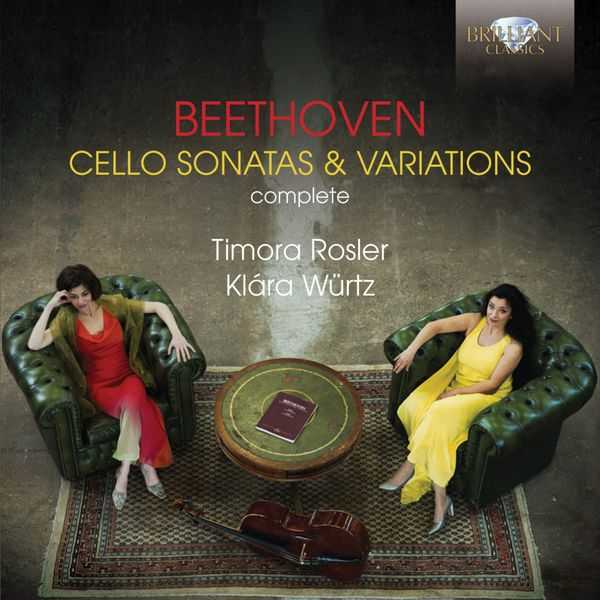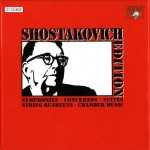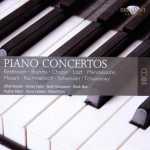
Composer: Ludwig van Beethoven
Performer: Timora Rosler, Klára Würtz
Format: FLAC (tracks)
Label: Brilliant Classics
Catalogue: 94624
Release: 2013
Size: 585 MB
Recovery: +3%
Scan: cover
Cello Sonata No. 1 in F major, Op. 5 No. 1
01. I. Adagio sostenuto – Allegro
02. II. Rondo. Allegro vivace
Cello Sonata No. 2 in G minor, Op. 5 No. 2
03. I. Adagio sostenuto e espressivo –
04. I. Allegro molto più tosto presto
05. II. Rondo. Allegro
Cello Sonata No. 3 in A major, Op. 69
06. I. Allegro non tanto
07. II. Scherzo. Allegro molto
08. III. Adagio cantabile – Allegro vivace
Cello Sonata No. 4 in C major, Op. 102 No. 1
09. I. Adagio – Allegro vivace
10. II. Adagio: Tempo d’andante – Allegro vivace
Cello Sonata No. 5 in D major, Op. 102 No. 2
11. I. Allegro con brio
12. II. Adagio con moto sentimento d’affetto
13. III. Allegro – Allegro fugato
Variations on “See the conquering hero comes” for Cello and Piano, WoO 45
14. Theme. Allegretto
15. Variation 1
16. Variation 2
17. Varaition 3
18. Variation 4
19. Variation 5
20. Variation 6
21. Variation 7
22. Variation 8
23. Variation 9
24. Variation 10
25. Variation 11
26. Variation 12
Variations on “Ein Mädchen oder Weibchen” for Cello and Piano, Op. 66
27. Thema
28. Variation 1
29. Variation 2
30. Variation 3
31. Variation 4
32. Variation 5
33. Variation 6
34. Variation 7
35. Variation 8
36. Variation 9
37. Variation 10
38. Variation 11
39. Variation 12
Variations on “Bei Männern, welche Liebe fühlen”, for Cello and Piano, WoO 46
40. Theme
41. Variation 1
42. Variation 2
43. Variation 3
44. Variation 4
45. Variation 5
46. Variation 6
47. Variation 7
Beethoven’s oeuvre only comprises a small collection of works for cello and piano, but that the composer was an accomplished writer for this combination of instruments is evident from the fact that Jean‐Louis Duport, one of Frederick II’s court cellists and one of the most revered musicians of his day, incorporated many of the techniques found in the Op.5 sonatas into his instruction manual for cello. The two works each contain only two movements, and the absence of a slow movement was probably to avoid the problem of dynamic imbalance between the instruments (which would have been accentuated in adagio passages) – something that is also the case with the Op.68 sonatas, composed in 1807. Only with the second Op.102 sonata does the composer finally replace the slow introduction, as found in No.1 and all of the above works, with a fullscale slow movement, one that precedes the massive fugal finale that was to form such an intrinsic part of Beethoven’s late‐period works.
Also featured are the three delightful sets of variations for cello and piano, each modelled on a different aria from Handel’s opera Judas Maccabeus and Mozart’s Die Zauberflöte, and each (just like the sonatas) placing the piano on an equal footing with the cello throughout. The works are an engaging addition to a collection that marks the return of Israeli/Dutch cellist Timora Rosler and Hungarian pianist Klára Würtz, whose previous Brilliant Classics release ‘Cello Rhapsody’ (BC 9157) was released to critical acclaim, and which provides a snapshot of the composer’s stylistic stylistic development over a period of nearly 20 years.
Recorded 19–23 January 2013, Sala congressi del Parco naturalistico di Onara, Padua, Italy.



